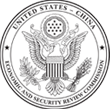China’s strict regulation of entertainment imports, including foreign films, violates the country’s World Trade Organization (WTO) commitments, as determined in a 2007 WTO decision calling for China to open its film market to foreign films. After years of noncompliance and inaction, China partially opened its film market in 2012 following a deal with the United States. The deal allowed for the import of 34 films each year—up from the previous limit of 20 films—in exchange for a temporary suspension of further U.S. WTO actions against China’s film importation policies. During Chinese President Xi Jinping’s September 2015 visit to the United States, the Motion Picture Association of America and China Film Group reached two new film agreements, which could increase market access for foreign films in China. Based on recent history, however, promises that China will further open its film market should be viewed skeptically. Chinese box office sales have increased alongside China’s standard of living, resulting in China surpassing Japan as the world’s second largest film market (behind the United States) in 2012. If global film market growth rates remain consistent over the next few years, many experts expect China to surpass the United States as the largest film market in the world as early as 2018. Hollywood relies on China’s film market for revenue, but the process to get films into China is arduous due to strict and opaque regulation of film imports. China’s regulations and processes for approving foreign films reflect the Chinese Communist Party’s position that art, including film, is a method of social control. As a result of these regulations, Hollywood filmmakers are required to cut out any scenes, dialogue, and themes that may be perceived as a slight to the Chinese government. With an eye toward distribution in China, American filmmakers increasingly edit films in anticipation of Chinese censors’ many potential sensitivities.
